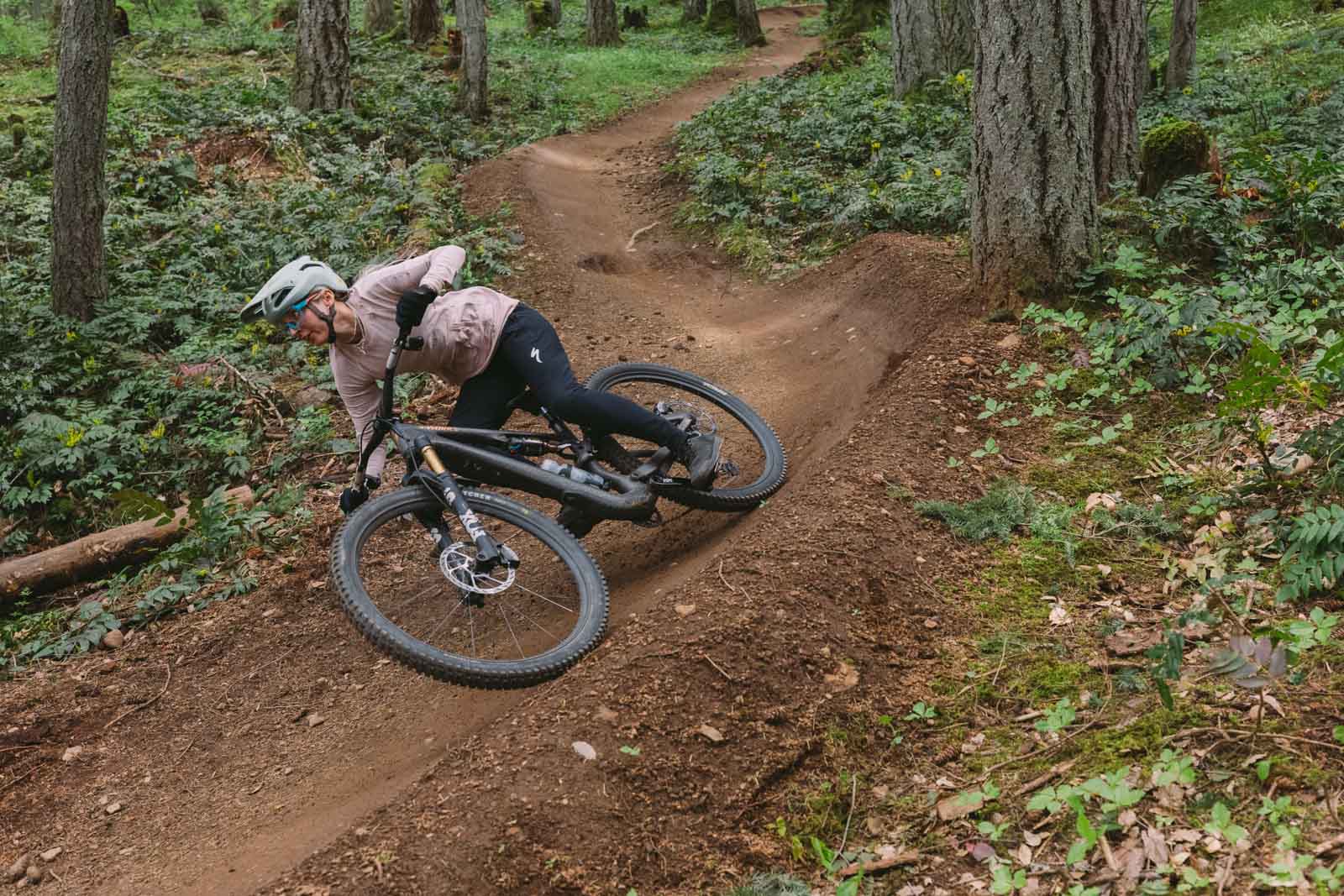The first Stumpjumper debuted 43 years ago in 1981, and this is the 15th full-suspension iteration of the bike. After three years of development, Specialized has taken possibly their most proven bike and made thoughtful refinements to make it even better. The new Stumpy is an efficient pedaling trail bike, but through its adjustments and clever suspension tech, it can handle a lot more than your average 145mm travel MTB.
Specialized Stumpjumper 15 – Frame Features:
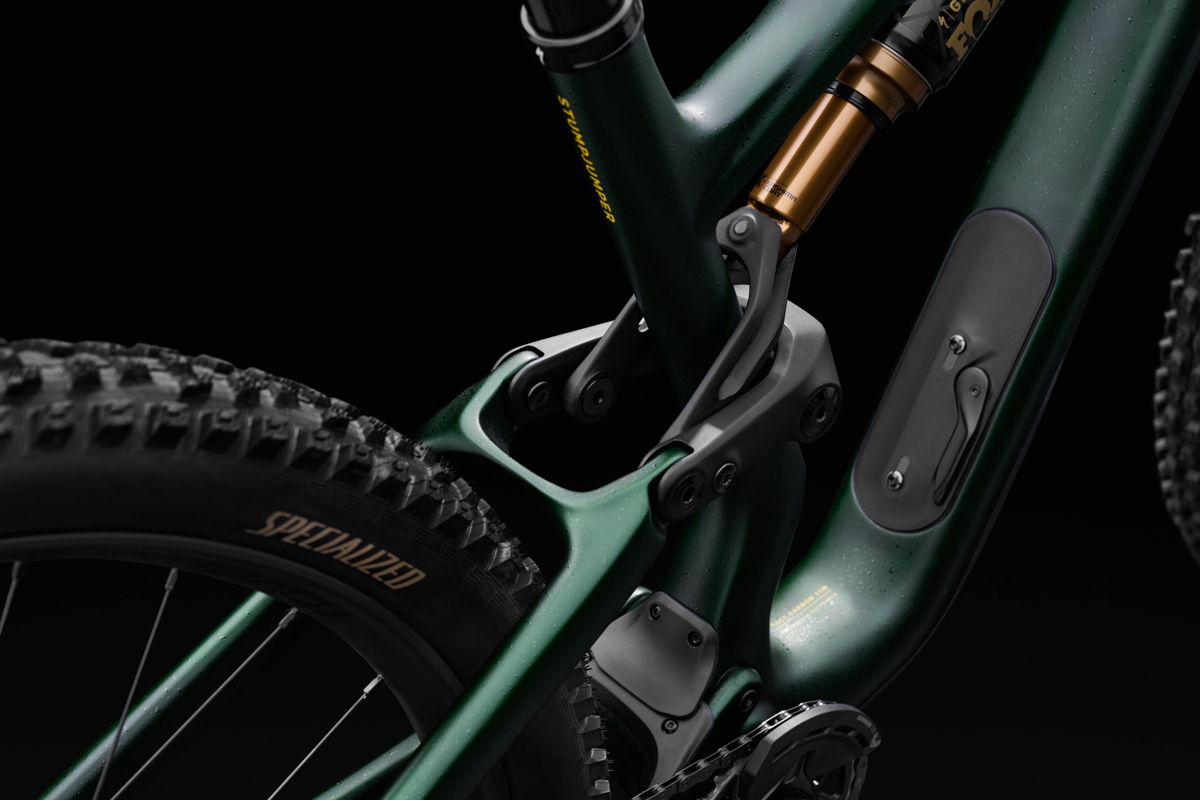
The Stumpjumper 15’s front and rear triangles are constructed from FACT 11m carbon fiber. One noticeable update is how there is no more asymmetrical ‘sidearm’ support bridging from the seat mast to the top tube. Specialized said they were very happy with the previous design, but realized they could move the material from the sidearm into the Stumpy 15’s beefed-up shock link and achieve the same strength and stiffness with a cleaner look.

Sticking with Specialized’s long-standing FSR suspension linkage, the 2025 Stumpy has been bumped to 145mm of rear travel. All models come with 150mm forks on frame sizes S2-6 and 140mm forks on the smallest S1 size. The Ohlins Coil model is another exception, which has a 160mm fork on all frame sizes.
Like many brands these days, Specialized is going with MX wheels on smaller sizes (S1 and S2) and stocking all larger sizes (S3 – S6) with 29” wheels. However, the larger frame sizes are mullet compatible by swapping to aftermarket shock links. The links keep the Stumpy’s geometry and suspension characteristics the same between either wheel size.
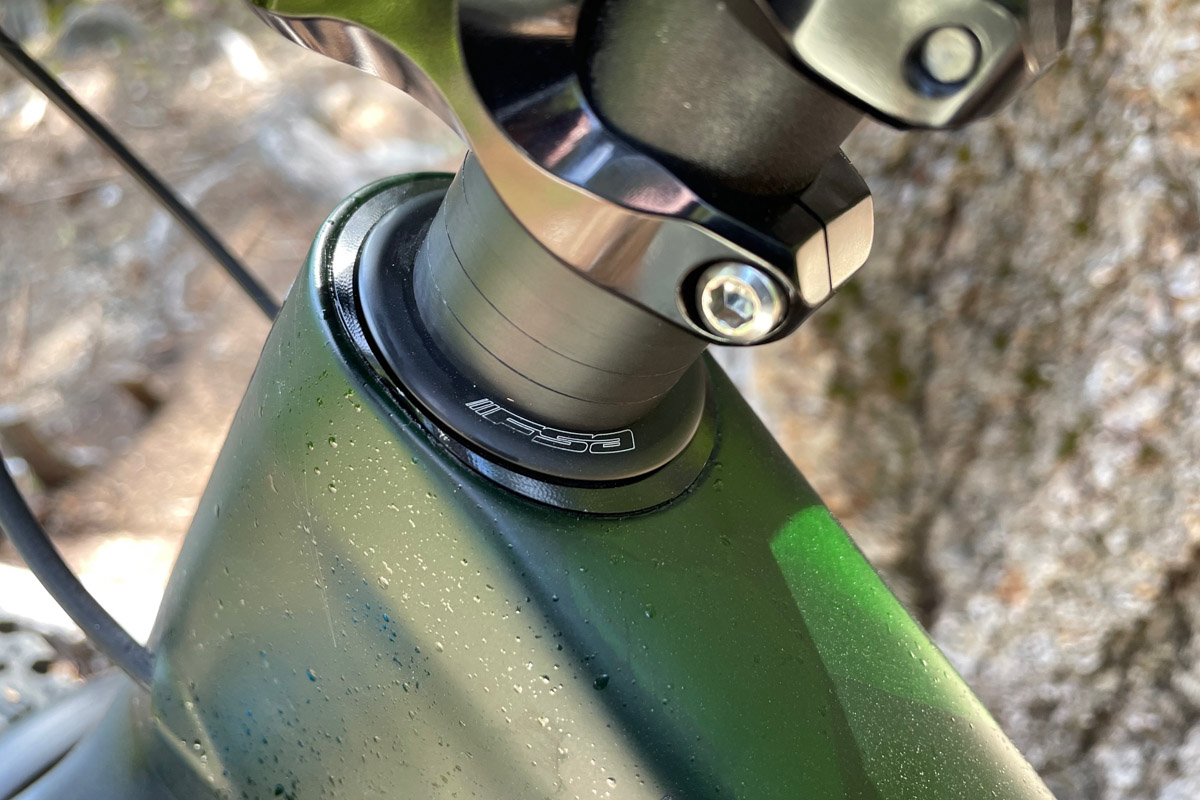
Another key addition to the Stumpjumper 15 is its adjustable head tube angle. By swapping the headset cups, you can choose between neutral or +/- 1° cups. Between the cups and BB height flip-chip, the steering angle can vary from 65.5° to a very slack 63°.
Fitments and Frame Protection:
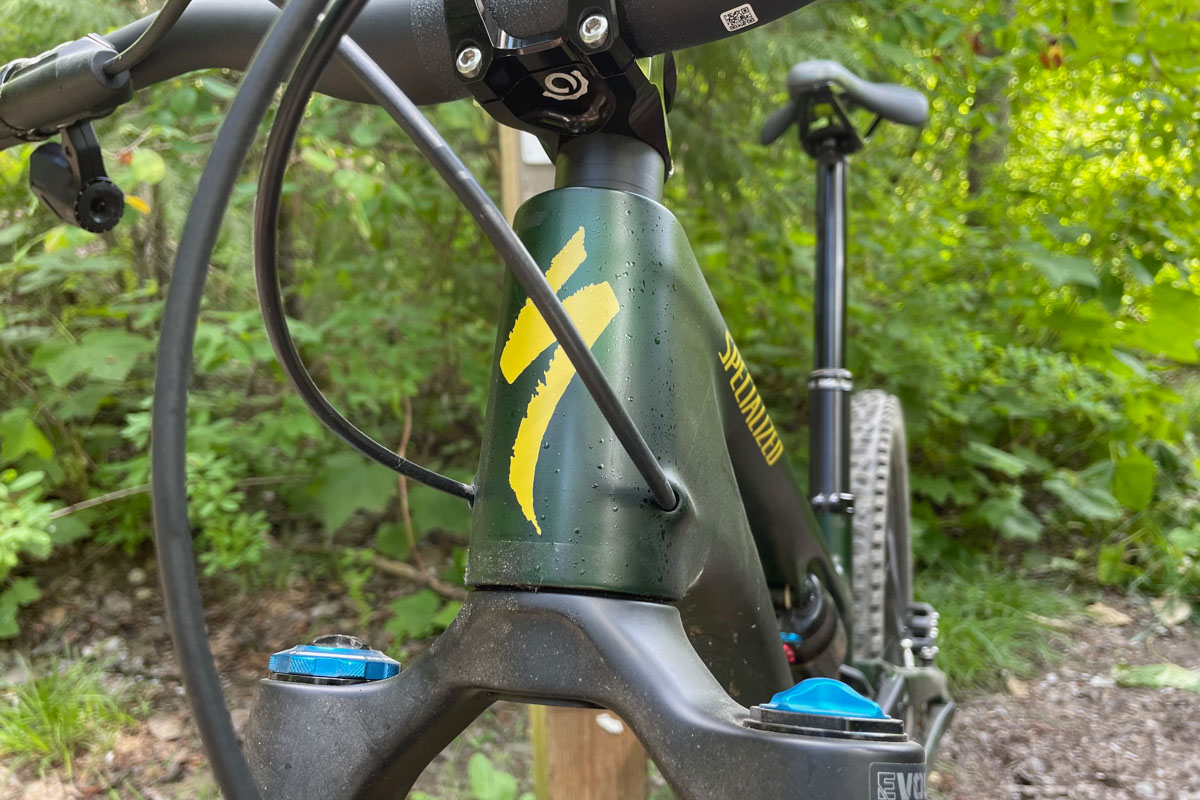
If you like the new Stumpy, I hope you like wireless shifting too because there is no routing for a derailleur cable on this frame! The routing for the brake hose and dropper post cable is sleek and tidy. Straight entry holes on the head tube keep the hose/cable from rattling or rubbing on the frame.
As for frame protection, the Stumpjumper 15 comes with chainstay and seatstay guards plus a mudflap behind the BB to keep rocks out of your linkage. It also gets a lower down tube protector, and a clear protective sticker covering the underside of the down tube. Specialized also includes Fox’s front fender on the Stumpy Pro and S-Works models.
Frame fitments include 148mm Boost rear axles, BSA 73mm threaded BBs, and SRAM UDH derailleur hangers. Specialized specs several dropper post brands on different Stumpy models, so check out their website for the travel numbers. The frames accept 34.9mm seat posts.
SWAT 4.0 Frame Storage:
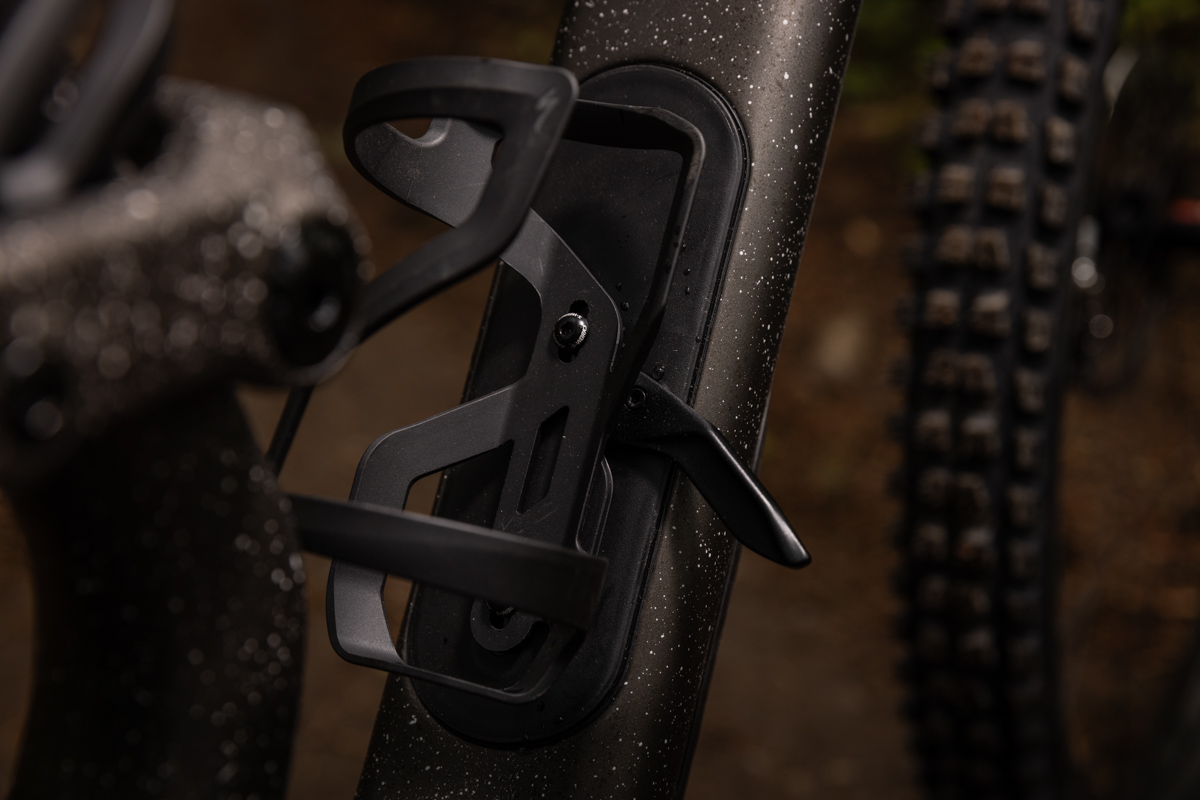
Specialized has redesigned its SWAT storage door and latch system, which now has a clean flush-mounted look. The latch now grabs directly onto the frame. If that sounds questionable to you, rest assured Specialized extensively tested it to ensure mud, dust, snow, etc, does not hamper its operation or damage the bike at all.
The down tube offers ample space inside for ride essentials. My test bike (S3 frame) easily fit a large c02 canister, inflator, plug tool, spare plugs, a spare battery for the AXS shifter, and a multi-tool, with room for more. Specialized supplies a zippered tool bag for in-frame storage.
I was happy to find the S3 frame easily accepts a large water bottle, with ample room to access it.
Genie Rear Shock:
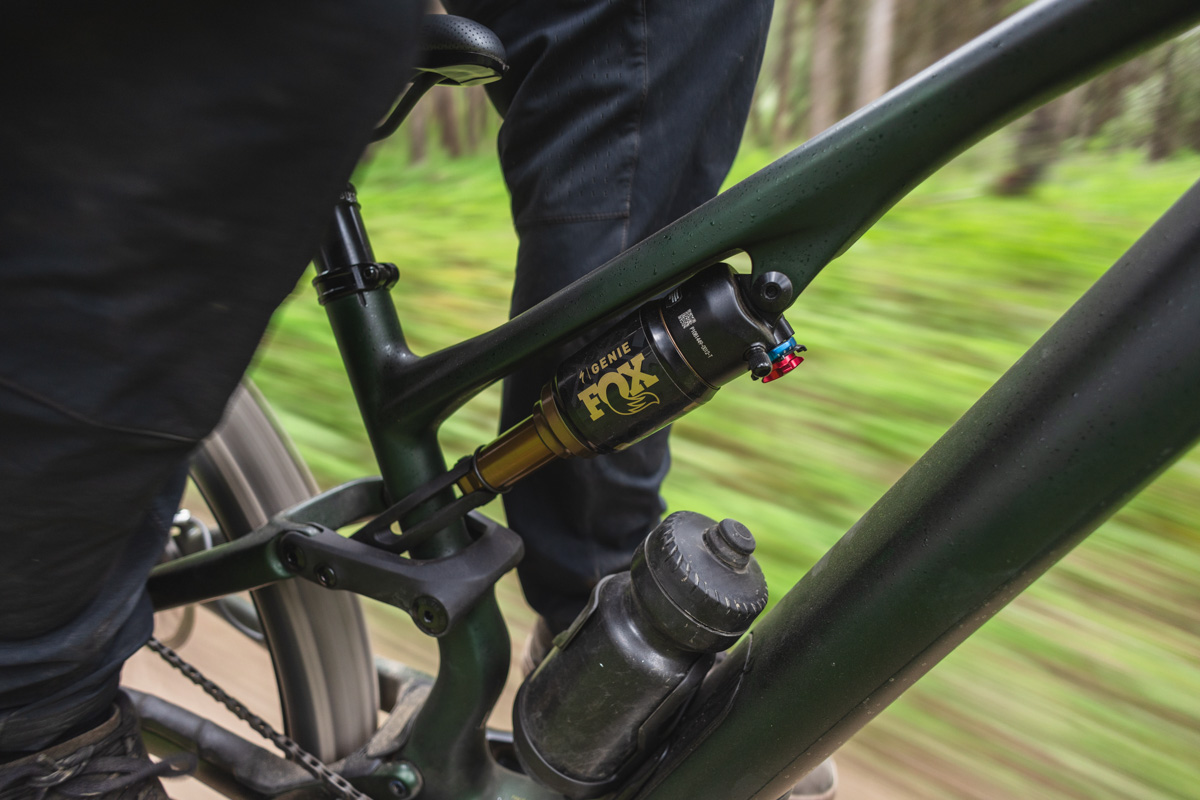
The Stumpjumper 15 features a new Fox Float X Genie rear shock, which is a patent-pending technology developed by Specialized. While the Genie shock was developed for this bike, the new Stumpjumper can run any rear shock including coils. That’s partly why Specialized specs one model with Ohlins coil suspension.
Now here’s what’s special about the Genie shock: It features an outer positive air chamber and an inner positive air chamber. They work together while you ride, as the outer chamber closes off when you hit about 70% travel. This causes the shock to essentially shrink its air chamber and create a ramp-up effect to increase bottom-out resistance.

During the initial stroke, the Genie’s two air chambers are both open and provide a large volume of air, offering a flatter spring curve for the first 70% of the stroke. This ensures sensitive, coil-like bump management throughout smaller and mid-sized impacts.

When you reach 70% travel, a sleeve inside the shock called the Genie Band slides up and closes off the Genie Air Port holes leading to the outer air chamber. The air volume in the shock is reduced to the inner chamber only, creating a highly progressive spring curve.
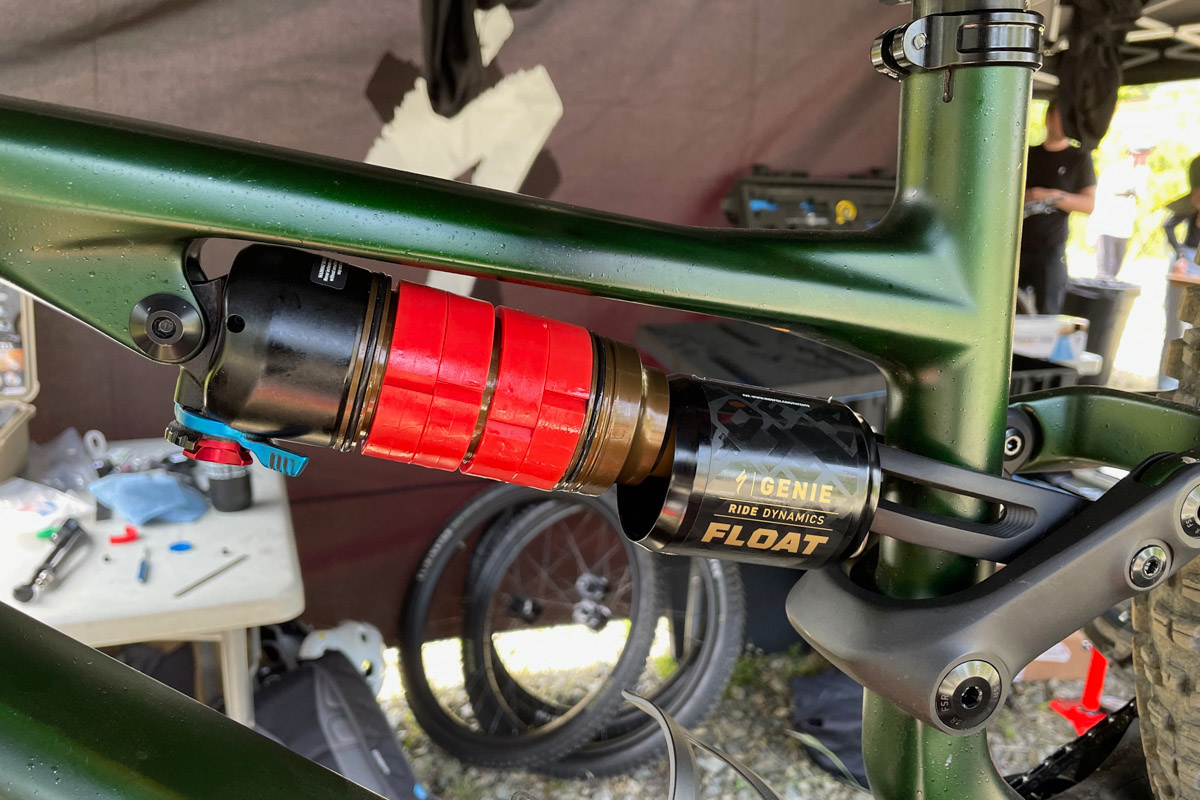
Controlling the first 70% of the stroke, the outer air chamber’s spring rate can be adjusted separately from the inner air chamber with up to four clip-on volume spacers. This allows riders to choose between maximum bump sensitivity or a more supportive ride feel. Adding or removing these volume spacers is a pretty easy job most riders could handle without a shop’s assistance. The inner air chamber’s bottom-out resistance can be independently tuned with eyelet volume spacers.
In addition to the unique aspects of the Genie rear shock, it also comes equipped with a two position switch (with a pretty firm climb mode) and a three position open mode adjustment (on all but the Comp model).
Suspension Characteristics:
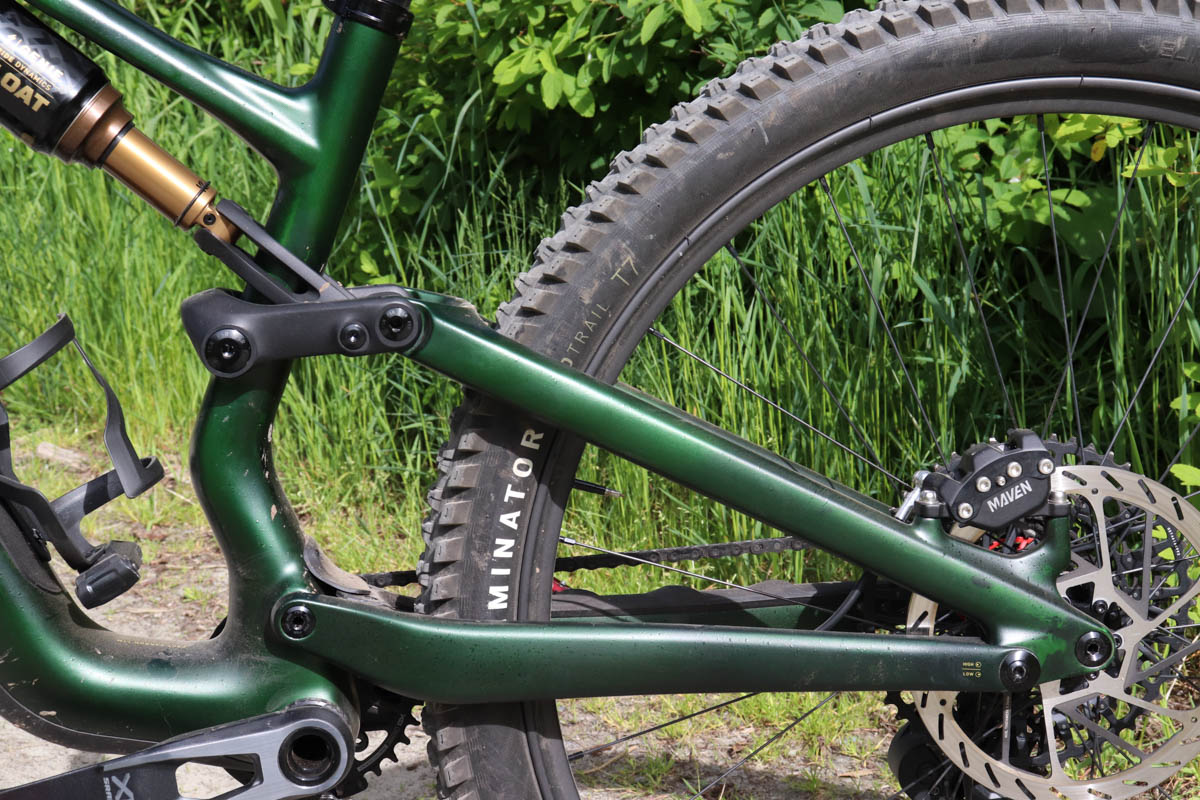
Specialized designed the new Stumpjumper to capably handle rough terrain and big impacts, yet maintain the poppy ride and efficient pedaling of a shorter travel bike. The Stumpy aims to offer sensitivity to small and mid-sized bumps, the ability to eat up square edged hits, and a bottomless feel on big drops.
By the numbers, Specialized says the Stumpjumper 15 offers 16.3% better bump force management and 57% better traction than the Stumpjumper EVO (meaning 57% less traction loss time between impacts). Due to the rising rate in the last 30% of the Genie shock’s stroke, Specialized reports 39% fewer severe bottom outs than a traditional air spring.
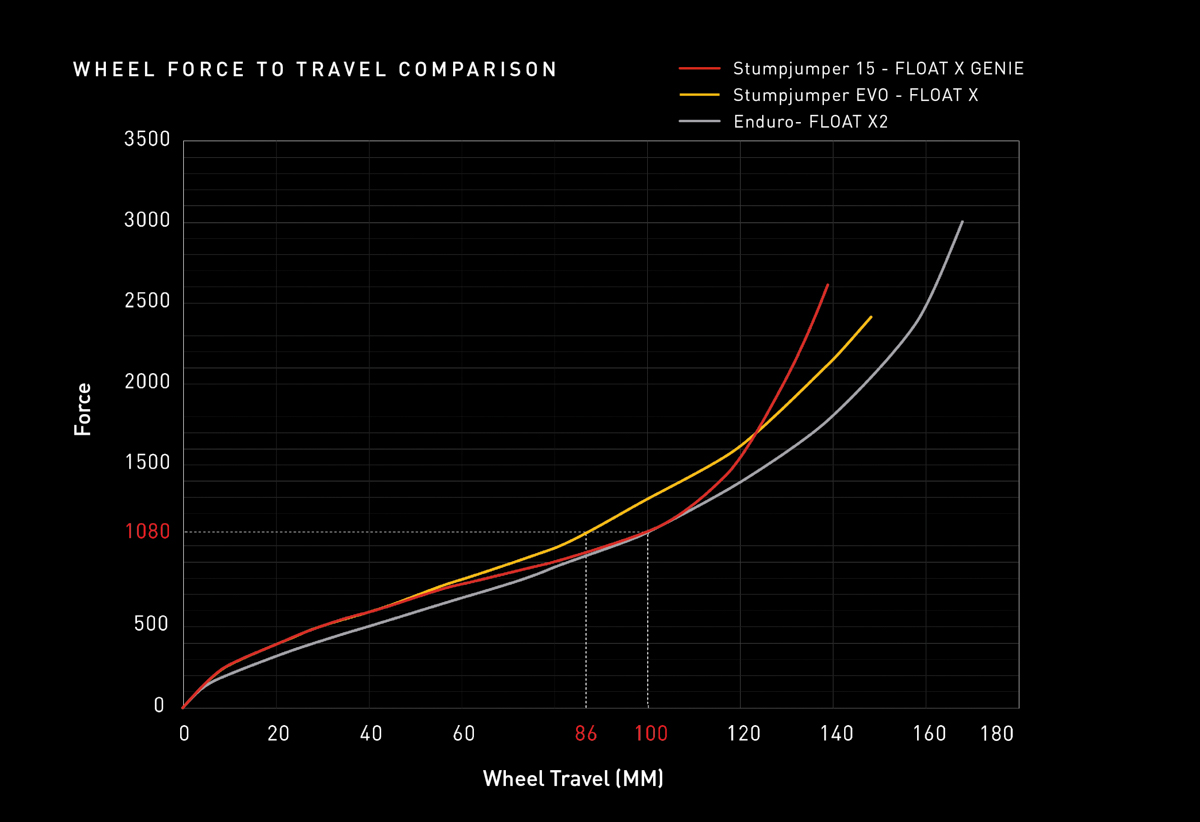
The softer initial stroke of the Genie shock requires less force to move the rear wheel than the Specialized Enduro or Stumpy EVO. This means the new Stumpy is more willing to use initial/mid-travel to suck up impacts and provide a smooth ride. The numbers show when the Genie-equipped Stumpy 15 is hit with a 1,080 Newton impact, the bike will use 100mm of travel to absorb it, while the Stumpy EVO will use 86mm of travel. This eagerness to use its initial and mid-stroke helps the Stumpjumper 15 achieve its feeling of having more travel than it actually does.
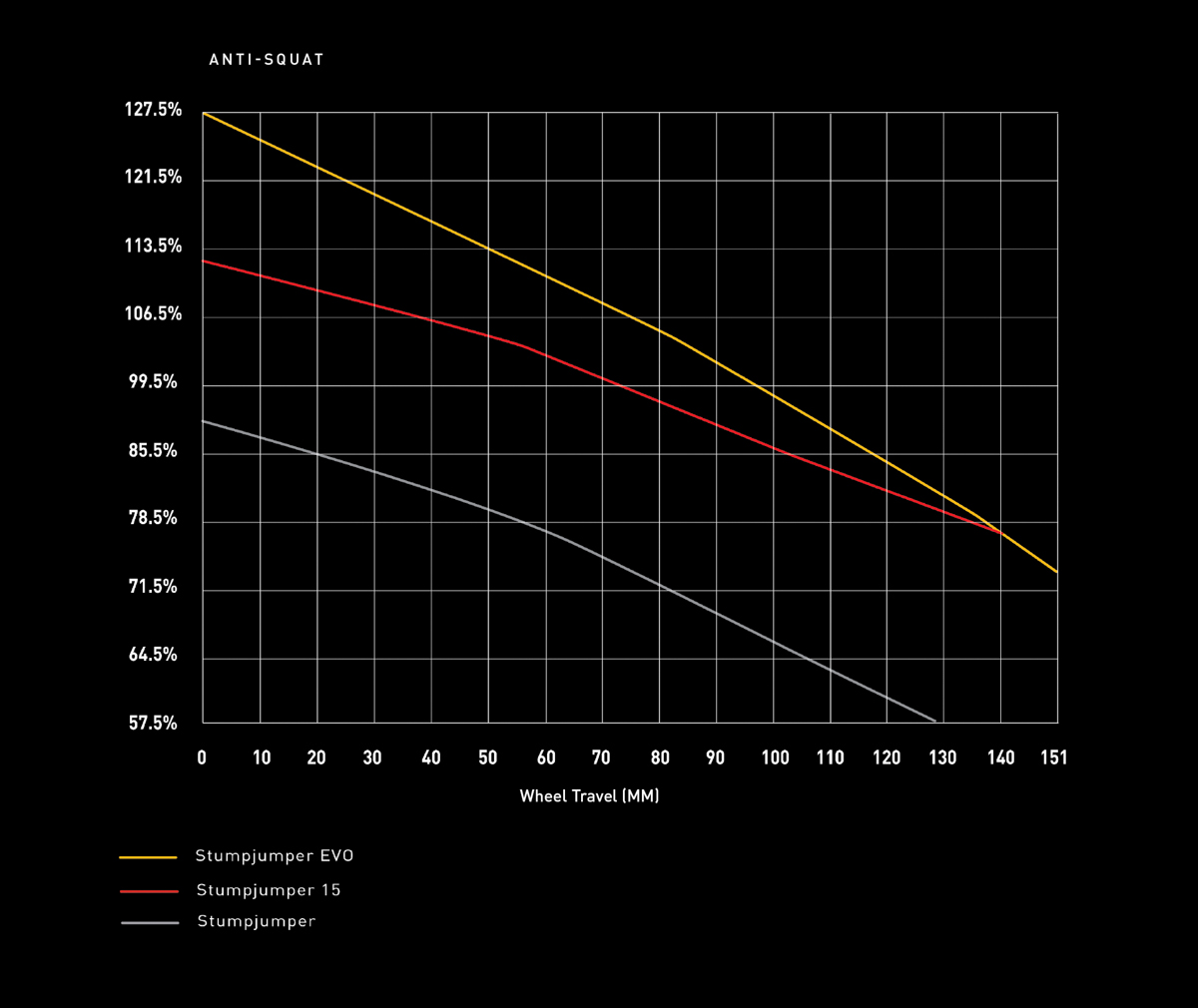
Of course, pedaling efficiency is of key importance for a trail bike. The Stumpy 15’s anti-squat was tuned to sit between the previous Stumpjumper and Stumpy EVO.
Geometry:
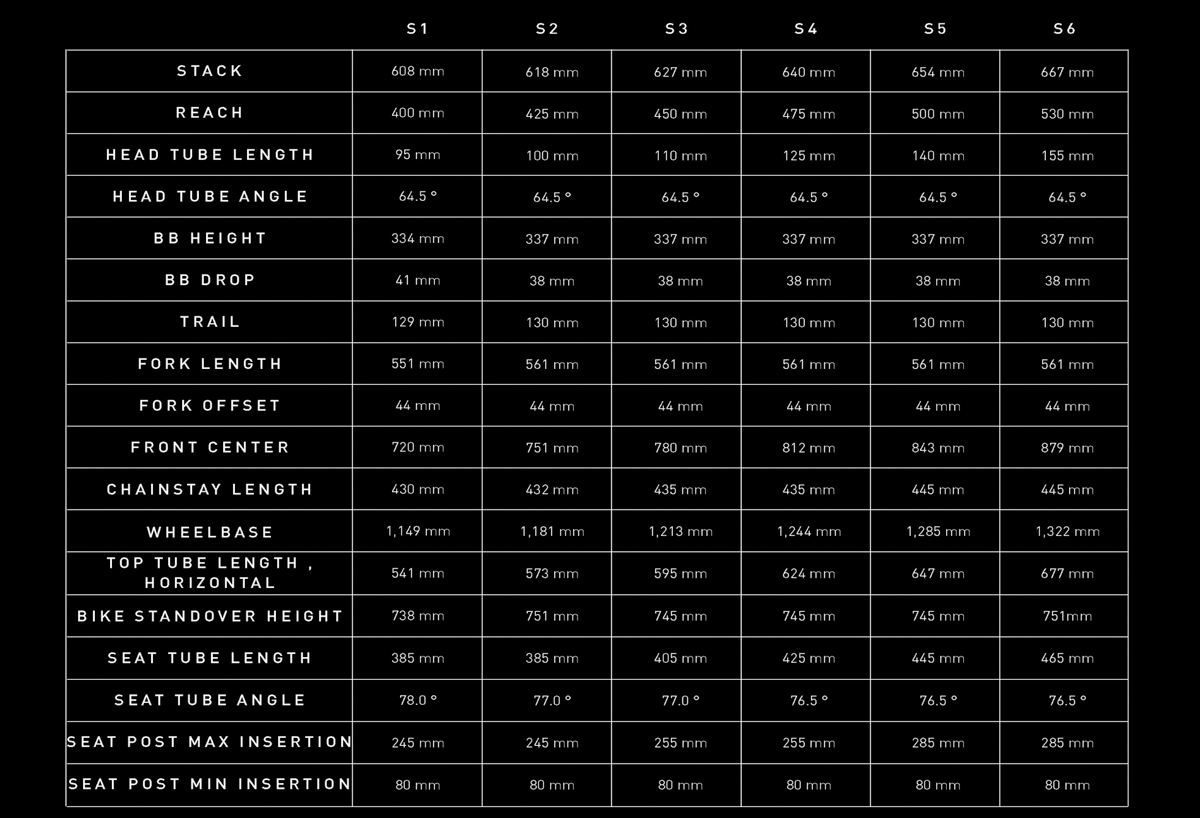
The Stumpjumper 15 will be available in six frame sizes – S1 to S6. Specialized keeps the head tube lengths and standover heights somewhat close across the size range so riders can choose the reach/wheelbase that suits their style best. You can opt to go shorter for nimbler handling, or longer for more stability.
With the Stumpy’s adjustable headset angle and BB height flip-chip, there are six different geo configurations possible. The swappable headset cups offer a neutral setting or +/– 1°. Combined with the BB height chip the Stumpy’s steering angles can vary from 63° to 65.5°. That’s an excellent range for a modern do-it-all trail bike.
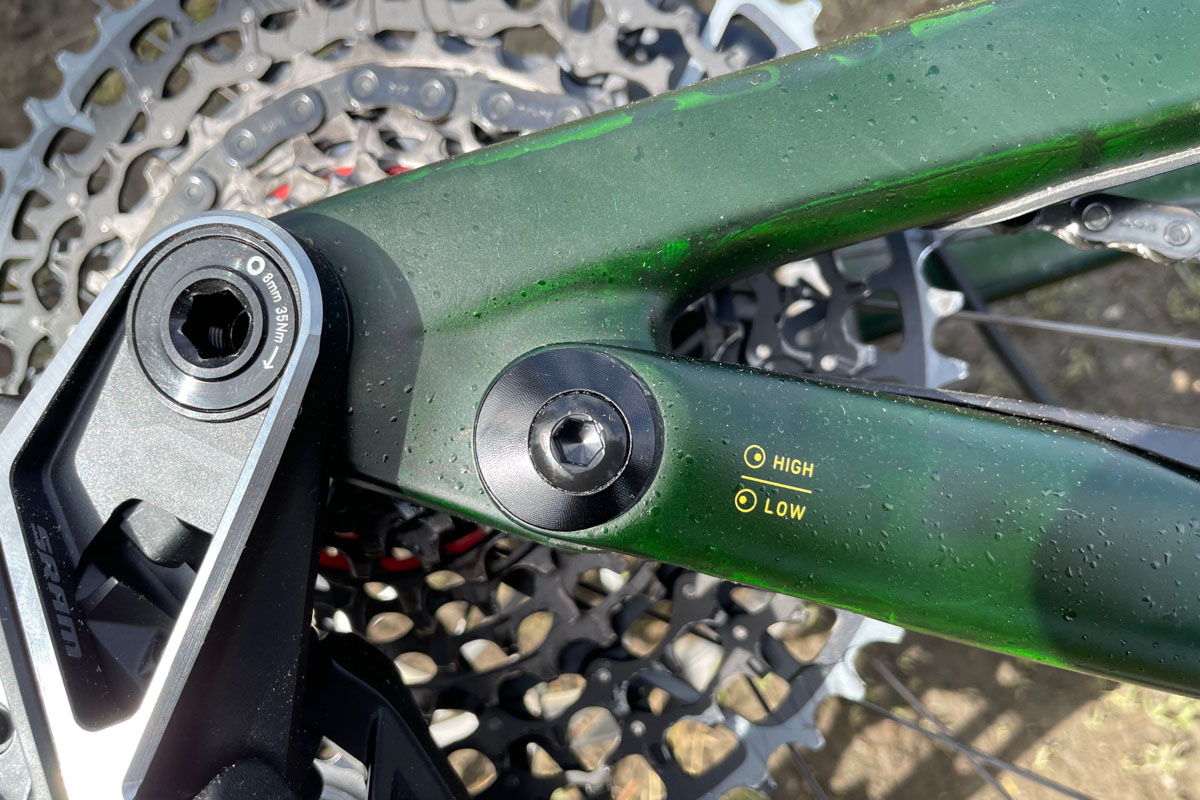
The BB is fairly low in either setting at 337mm in High position or 330mm in Low. Moving from High to Low also slacks the bike out by 0.5°.
Reach numbers are up-to-date but not crazy, and given the S sizing scheme, you’re not stuck with a certain size based on your height or inseam. At 5’10” I find myself in the middle of the S3 and S4 frames. At 450mm the S3 (which I’m testing) is on the short side for me, but at 475mm the S4 would be lengthy. Both, however, are perfectly within reason for someone my height. As a consumer, I’d definitely want to test ride both before making a decision.
Seat masts angles vary slightly between frame sizes, but range from 76.5° to 78° (in neutral/High position). The Stumpy 15 sticks with shorter chainstays across the board. Specialized offers four different rear end lengths ranging from 430mm (S1) to 445mm (S5 and S6).
Build Notes/Components:
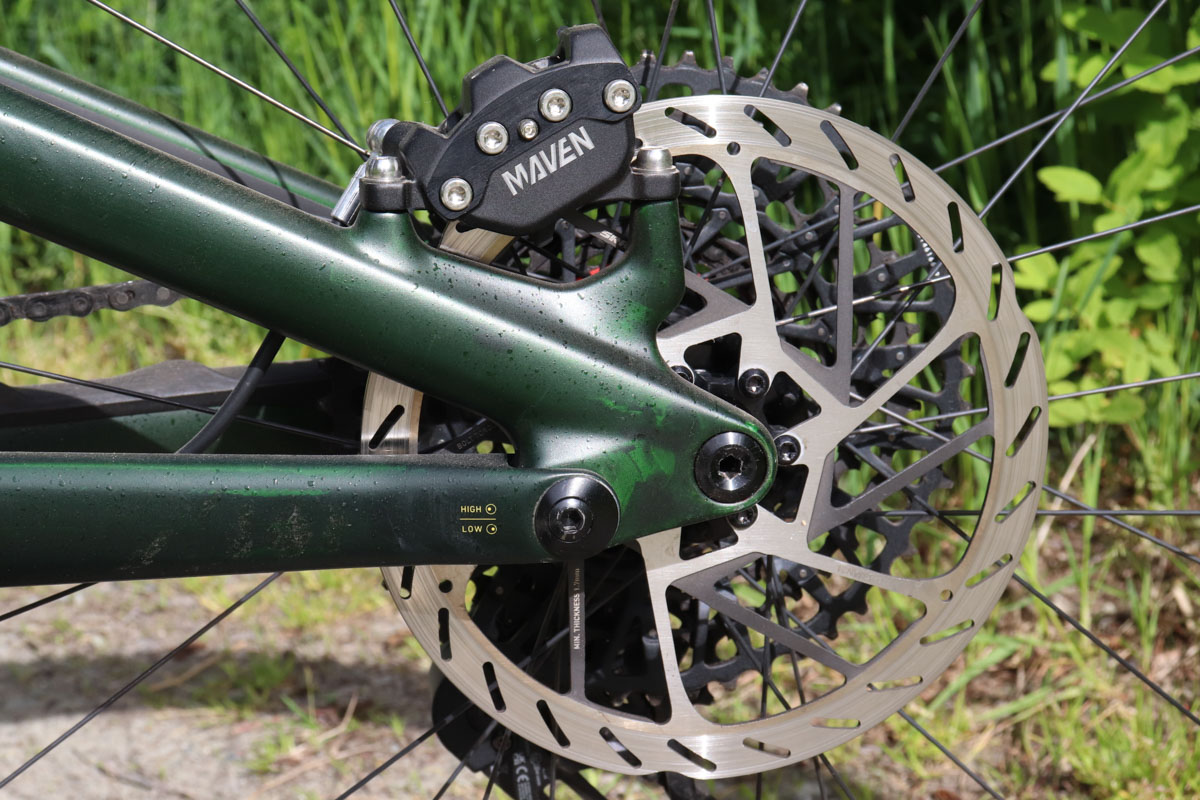
I noticed something about the Stumpjumper’s build specs; Specialized doesn’t want anyone thinking they have to limit themselves on this bike. For a competitive bike in the trail category (my Pro model test bike is under 32lbs), it’s got some beefy touches.
First of those would be the SRAM Maven brakes, with 200mm rotors front and 200/180mm rears (size dependent) for incredible stopping power. Note the Ohlins model comes with TRP DH-R EVO brakes on 220/203mm rotors. Specialized also equips the Stumpys with wide bars, at 780mms on S1 and S2s and 800mms on all larger sizes. The higher-end models’ SRAM XO and XX cranksets also include bash guards, but one thing not included is a chain guide.
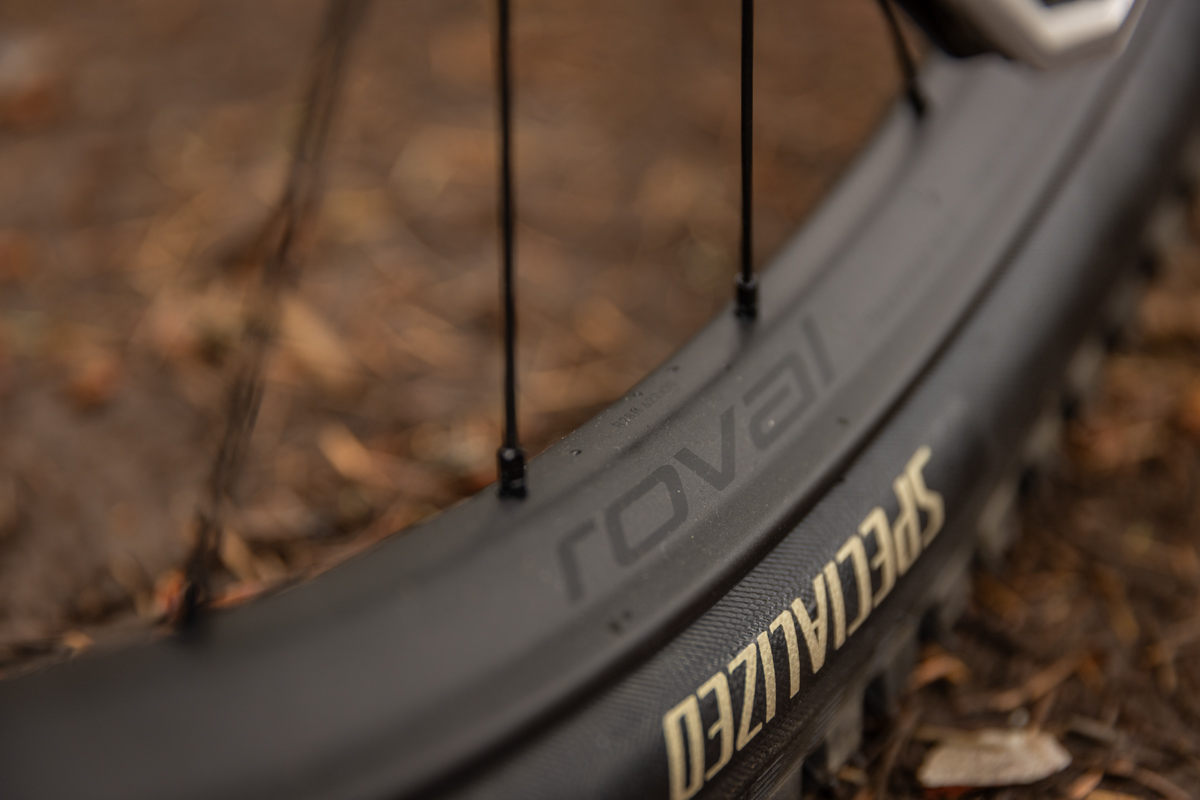
The Stumpy 15 Pro and S-Works models roll on pinch flat-resistant Roval Traverse SL II wheels. These rims’ Flat Top bead profile requires 85% more force to pinch a tire vs. standard round bead rims. The front and rear rims are specific, and the wheels offer vertical compliance. The rims are also designed to ‘ankle’ side-to-side to improve traction on uneven surfaces.
Specialized specs all the new Stumpys with their Butcher (front) and Eliminator (rear) tires. Grid Trail casings and 2.3” widths come stock.
Model Lineup:
There will be five builds of the Stumpjumper 15 and an S-Works frameset available. Visit Specialized’s website for full build specs on each model.
- S-Works Stumpjumper 15 – $12,000
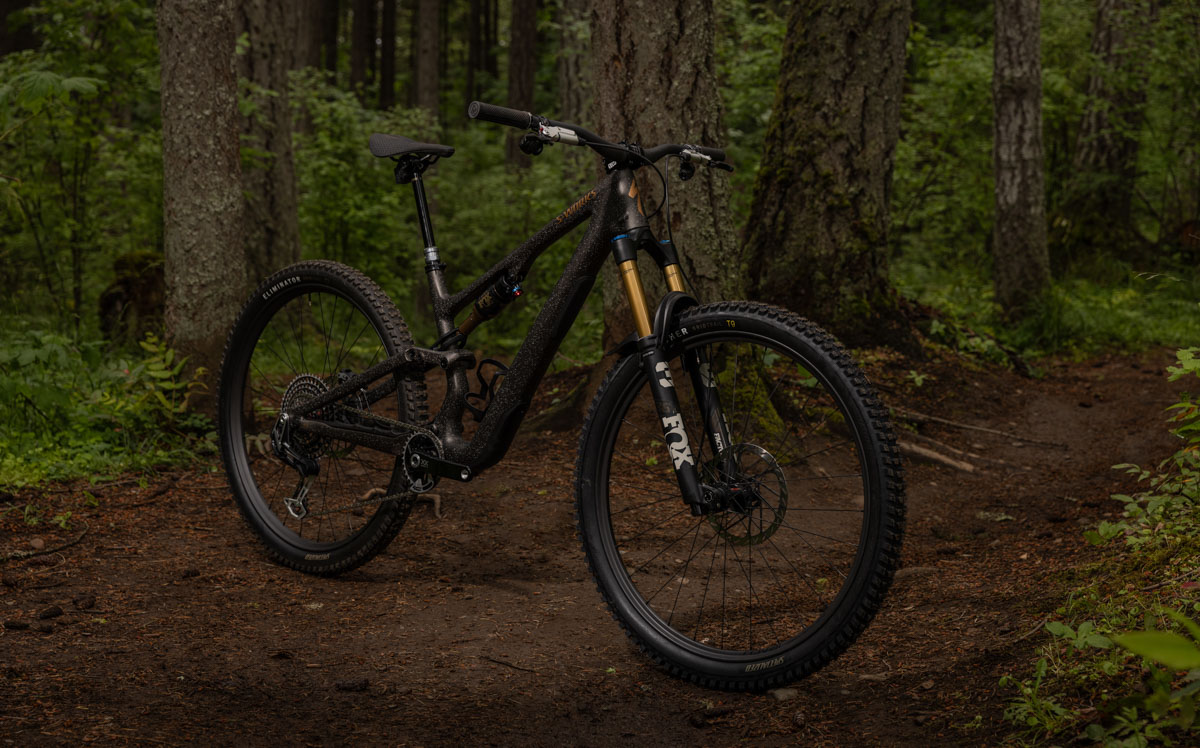
- Stumpjumper 15 Pro – $9,000
- Stumpjumper 15 Ohlins Coil – $8,500
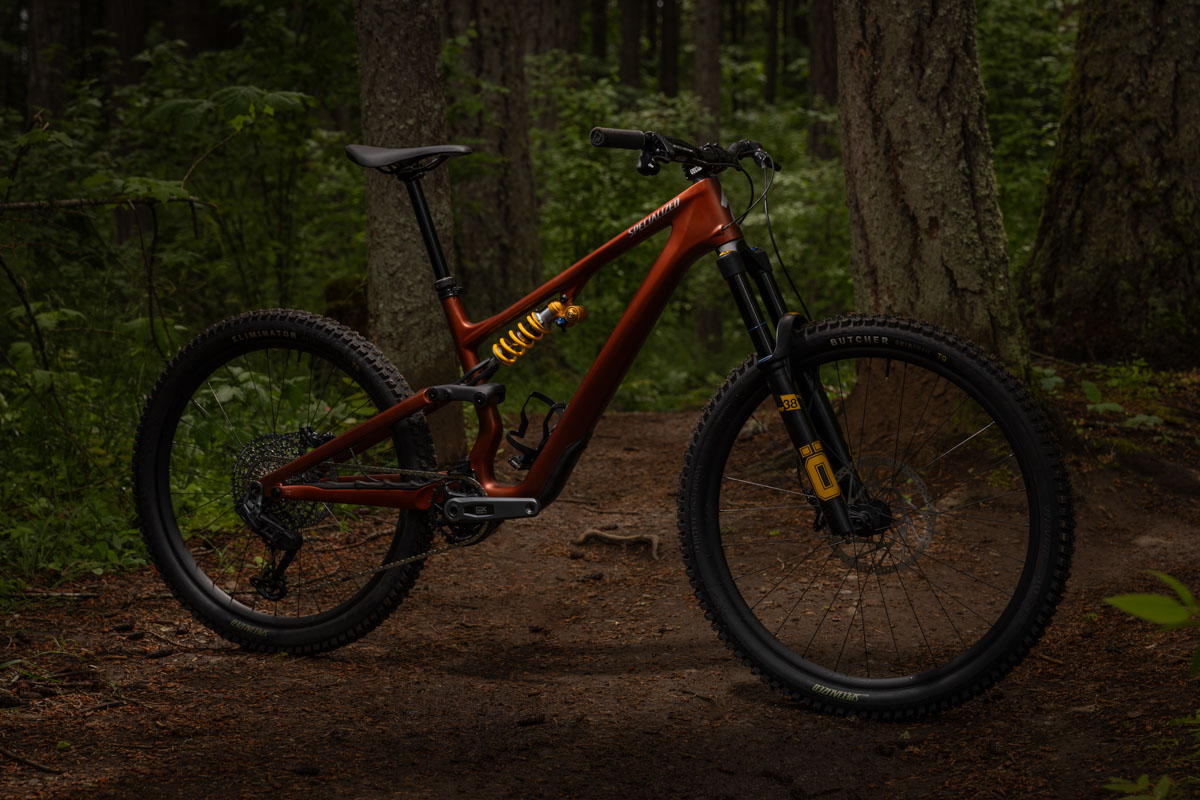
- Stumpjumper Expert – $6,500
- Stumpjumper 15 Comp – $5,500
- S-Works Stumpjumper 15 Frameset – $3,500

I’ve been riding the Stumpjumper 15 Pro for a month. Be sure to check out my review article to see how it performed on-trail.
